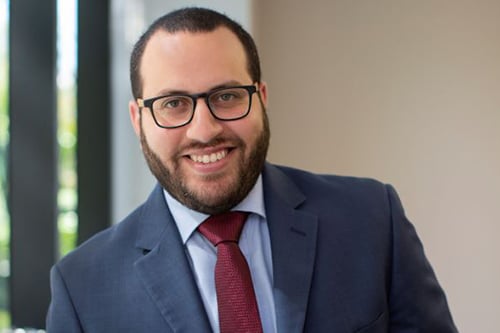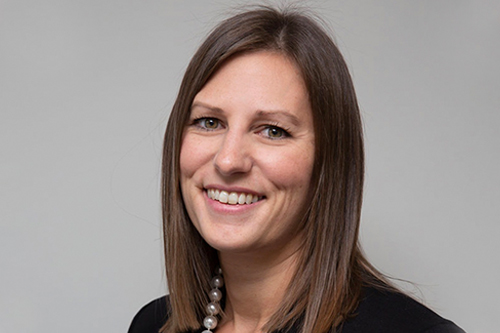

As the COVID-19 lockdowns lift, many restaurants and hospitality businesses are struggling to resume operations due to limited capacity, restrictions from health authorities, and low customer traffic caused by eroded consumer trust.
According to Omar Ali-Shamaa (pictured above), lawyer at Wolfe Pincavage in Miami and an experienced restaurateur, the two biggest concerns in reopening are customer and employee safety.
“From an employer perspective, employee safety is top of mind as businesses reopen,” Ali-Shamaa told Corporate Risk and Insurance. “However, there is a delicate balance between making sure employees are safe but also doing their job. Under the Families First Coronavirus Response Act (FFCRA), certain employers must provide up to 80 hours of paid sick leave to employees if the employee has been advised by a health care provider to self-quarantine or is experiencing COVID-19-19 related symptoms. As such, if an employee contracts the virus, an employer covered under the FFCRA will have to provide paid sick leave to the employee infected with the virus, as well as the employee covering for said employee, resulting in additional operational costs.”
He added that operators are also facing additional charges of up to US$1,000 per day in labor or materials to ensure proper sanitation measures are taken to restore customer confidence. To recoup these costs, some establishments have added a COVID surcharge to customer’s bills.
“Operating in this ‘new normal’ leaves businesses in the hospitality space with increased costs up to 20% while operating at only 50% capacity, therefore affecting their daily bottom line,” Ali-Shamaa said.
Ali-Shamaa also pointed out another important component in restaurant reopening strategies – visibility.
“To instill confidence, customers must physically see a restaurant is taking the proper precautions in their sanitation process, such as hand sanitizer dispensers, wiping down tables, barriers, and disposable menus,” he said.
“Establishments must also follow CDC, state, county, and local guidelines, including no tables within six feet of each other (measured from the back of one chair to the back of another), and employees sporting the proper PPE equipment.”
Failure to do so will result in potential litigation, fines, or shutdowns, he added.
Continuing on the topic of visibility, Ali-Shamaa said that restaurants are also rebranding their businesses and marketing to conform to the ‘new normal.’ These include branded PPE equipment, social distance signage, and updating their website and social media platforms to add new policies.
“While some restaurants are finding ways to create a safe dining experience reminiscent of pre-pandemic times, others are adapting and implementing creative tactics,” he said. “Out-of-the-box creative tactics include virtual cooking classes and pre-packed kits with raw and semi-raw ingredients.”

Risk management and litigation
With the unprecedented scale and effects of COVID-19, the hospitality industry has seen some unique cases in previously uncharted territory. Danya Pincavage (pictured above), co-founder and partner at Wolfe Pincavage, said that several restaurants have filed class-action lawsuits against their commercial property insurers, seeking business interruption coverage. However, business interruption coverage usually requires proof of physical damage to the insured premises.
“Insurers are denying coverage because viruses allegedly cannot ‘physically damage’ real property,” she said. “Even if insureds can demonstrate that the virus caused ‘physical damage’ to their property, they may also need to prove that COVID-19 was present on their premises around or during the time of closure.”
Pincavage added that many insurance policies expressly exclude coverage for business interruption caused by viruses. She said that these lawsuits are being closely watched, and if courts find that COVID-19 “physically damaged” insured premises, it will pave the way for other hospitality businesses to seek coverage.
“A major concern on the horizon is lawsuits filed by employees alleging that they contracted COVID-19 at work,” she said. “These will probably be brought as workers’ compensation claims and should be covered under most workers’ compensation policies. The employees will have to prove that they contracted COVID-19 at work, which will be challenging given the widespread nature of the disease.”
Another possible source of lawsuits are customers that allege that they contracted COVID-19 while patronizing a business.
“Many businesses have commercial general liability insurance, which covers ‘bodily injury’ sustained by a non-employee at the insured premises,” Pincavage said. “But most commercial general liability insurance requires that the ‘bodily injury’ be caused by an ‘occurrence’ – usually defined as an ‘accident, including continuous or repeated exposure’ to the same harmful conditions. The term ‘accident’ is not defined in these policies, and litigation will likely arise regarding whether exposure to COVID-19 is an ‘accident’ under a commercial general liability policy.”
Find out if taking out general liability insurance worth it with this article.
With the uncertain situation insurance is currently in against COVID-19, Pincavage advised risk managers to be vigilant and use best practices. If possible, risk managers should also document what procedures are in place to protect their employees and customers.
“Should a situation arise where COVID-19 is discovered on the premises, a business can point to its documentation to demonstrate that it complied with the guidelines and procedures,” she said. “As we learn more about COVID-19 transmission methods every day, businesses can only adhere to the current guidelines to protect themselves.”
